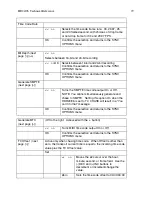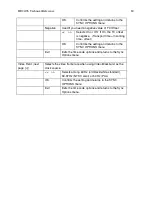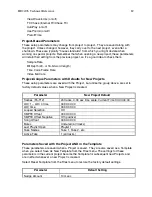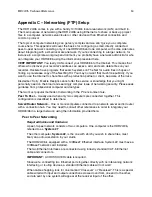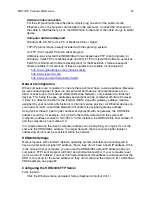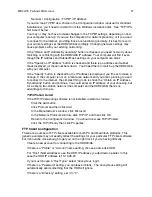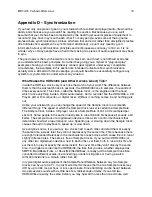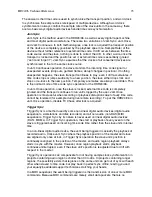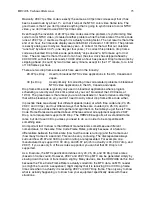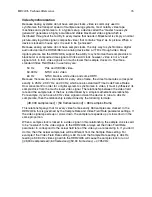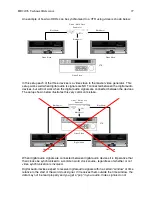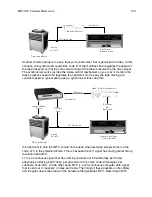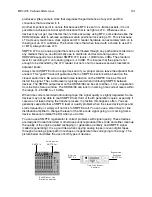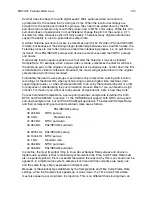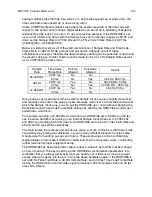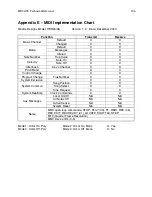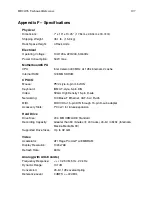
HD24/96 Technical Reference
93
The answer is that time code is used to synchronize the transport position, and word clock
to synchronize the sample clock rate/speed of multiple devices. Although word clock
synchronization always controls the sample rate of the slave units in the same way, there
are two basic ways digital audio devices handle time code synchronization.
Jam Sync
Jam Sync is the method used in the HDR24/96, as well as every digital tape machine
and most digital audio workstations. There are two variations of Jam Sync: Jam Once,
and Jam Continuous. In both methodologies, once lock is acquired the transport position
of the device is completely governed by the playback speed (i.e. Sample Rate) of the
device without further reference to external time code. If drift occurs between the time
code source and the slave, nothing is done to correct the drift. In other words, once the
transport is locked and the position is set it, external time code is essentially ignored
(“set it and forget it”). Jam Sync assumes that the clocks of all concerned devices are
synchronized to the to the same clock source.
In Jam Continuous operation, the slave monitors the incoming time code signal for
unexpected events (dropouts, garbled frames, abrupt changes in position). If nothing
unexpected happens, the slave transport continues to play, even if drift accumulates. If
time code stops or jumps suddenly to a new position, the slave either drops lock and
stops or re-locks to the new position. Temporary anomalies are always overridden. This
is the normal mode of time code sync operation for the HDR24/96.
In Jam Once operation, once the slave is locked, external time code is completely
ignored and the transport continues to run until stopped by the user. Jam Once
operation is most useful when recording or playback disruptions due to faulty time code
cannot be tolerated (for example during live remote recording). To put the HDR24/96 in
Jam Once operation, disable TC Chase after lock is acquired.
Trigger Sync
Trigger Sync is a method used by some non-linear digital audio devices (digital audio
sequencers, workstations and disk recorders) and all non-audio (non-DAS) MIDI
sequencers. Trigger Sync by its nature is never used on linear digital audio devices
(DATs, MDMs). In Trigger Sync operation, the start or playback of every event on the
slave is triggered based on incoming time code time rather than the slave unit’s internal
time.
In a non-linear digital audio device, the event being triggered is actually the playback of
recorded audio. Unlike Jam Sync where the playback position of the master and slave
are aligned only once at lock, in Trigger Sync operation the slave unit’s position is
continually realigned to the position of the master, and audio region playback always
starts in sync with the master. However, once region playback starts, playback
continues uninterrupted, even if the slave unit’s position is readjusted due to drift with
respect to the master.
Trigger Sync operation can compensate for not having sample clock synchronization in
projects containing audio regions shorter than 30 to 40s. In projects containing longer
regions, the possibility exists that regions on the same unit can get out of sync with each
other when slaved to time code, but play back in perfect sync offline, leaving you and
your equally-bewildered support technician scratching your heads.
In a MIDI sequencer, the event being triggered is the transmission of one or more MIDI
commands. Because MIDI commands are merely small data packets, there is no
Содержание MDR 24/96
Страница 109: ...HDR24 96 Technical Reference Pg 109 ...
Страница 110: ......

